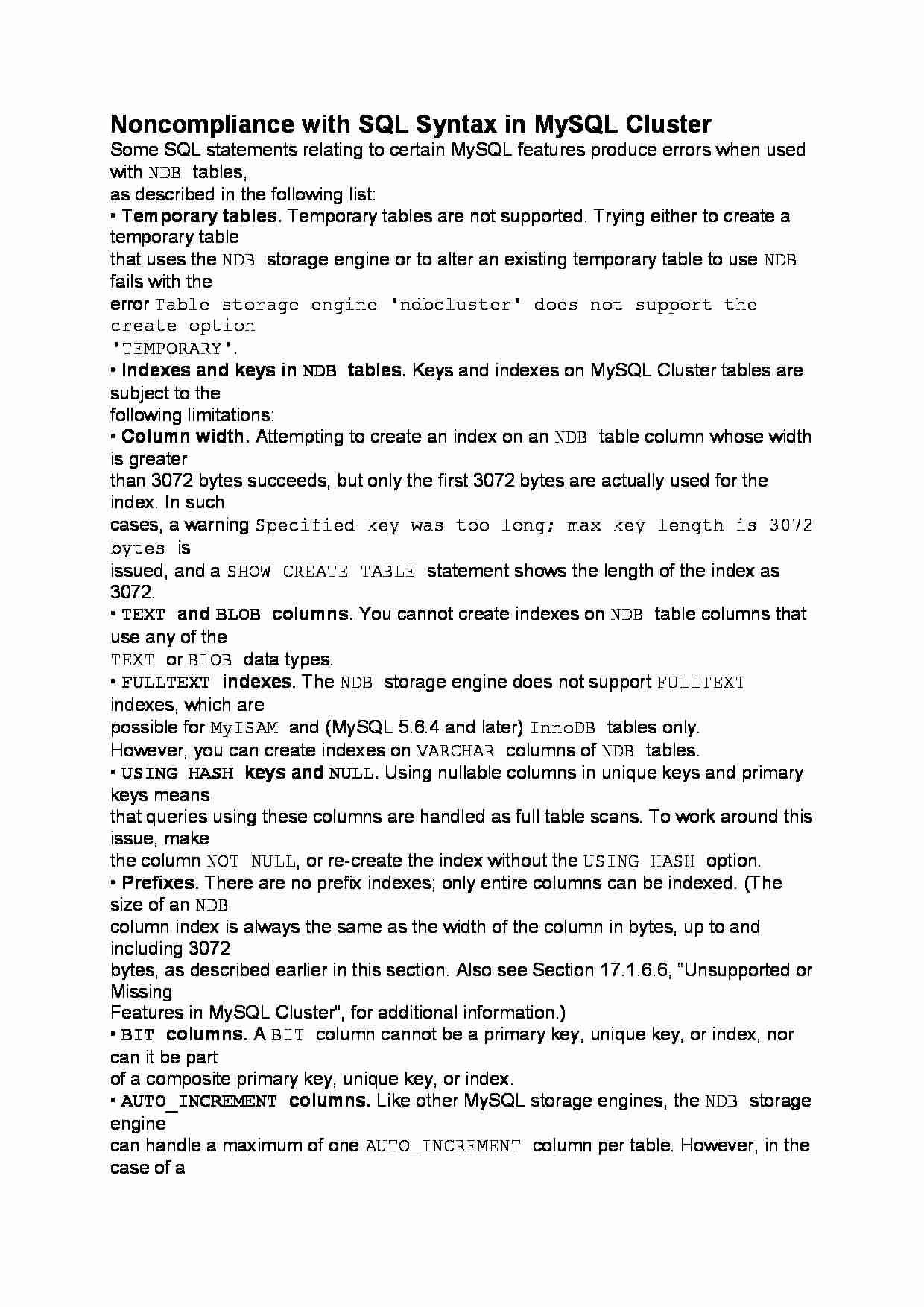To tylko jedna z 2 stron tej notatki. Zaloguj się aby zobaczyć ten dokument.
Zobacz
całą notatkę


Noncompliance with SQL Syntax in MySQL Cluster
Some SQL statements relating to certain MySQL features produce errors when used with NDB tables,
as described in the following list:
• Temporary tables. Temporary tables are not supported. Trying either to create a temporary table
that uses the NDB storage engine or to alter an existing temporary table to use NDB fails with the
error Table storage engine 'ndbcluster' does not support the create option
'TEMPORARY'.
• Indexes and keys in NDB tables. Keys and indexes on MySQL Cluster tables are subject to the
following limitations:
• Column width. Attempting to create an index on an NDB table column whose width is greater
than 3072 bytes succeeds, but only the first 3072 bytes are actually used for the index. In such
cases, a warning Specified key was too long; max key length is 3072 bytes is
issued, and a SHOW CREATE TABLE statement shows the length of the index as 3072.
• TEXT and BLOB columns. You cannot create indexes on NDB table columns that use any of the
TEXT or BLOB data types.
• FULLTEXT indexes. The NDB storage engine does not support FULLTEXT indexes, which are
possible for MyISAM and (MySQL 5.6.4 and later) InnoDB tables only.
However, you can create indexes on VARCHAR columns of NDB tables.
• USING HASH keys and NULL. Using nullable columns in unique keys and primary keys means
that queries using these columns are handled as full table scans. To work around this issue, make
the column NOT NULL, or re-create the index without the USING HASH option.
• Prefixes. There are no prefix indexes; only entire columns can be indexed. (The size of an NDB
column index is always the same as the width of the column in bytes, up to and including 3072
bytes, as described earlier in this section. Also see Section 17.1.6.6, “Unsupported or Missing
Features in MySQL Cluster”, for additional information.)
• BIT columns. A BIT column cannot be a primary key, unique key, or index, nor can it be part
of a composite primary key, unique key, or index.
• AUTO_INCREMENT columns. Like other MySQL storage engines, the NDB storage engine
can handle a maximum of one AUTO_INCREMENT column per table. However, in the case of a
Cluster table with no explicit primary key, an AUTO_INCREMENT column is automatically defined
and used as a “hidden” primary key. For this reason, you cannot define a table that has an explicit
AUTO_INCREMENT column unless that column is also declared using the PRIMARY KEY option.
... zobacz całą notatkę




Komentarze użytkowników (0)